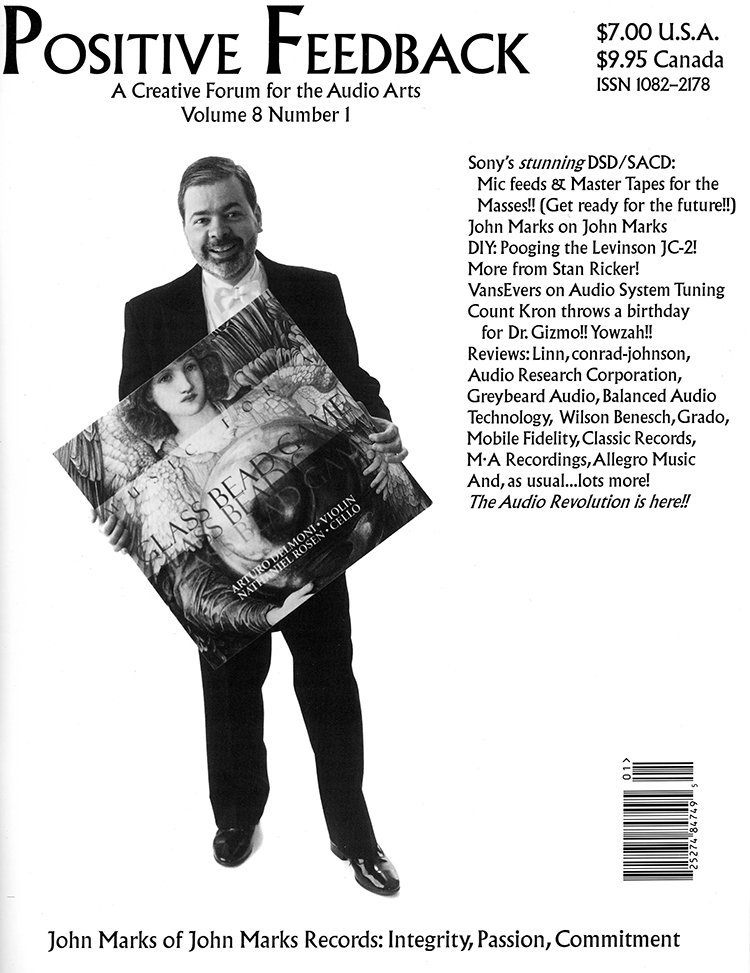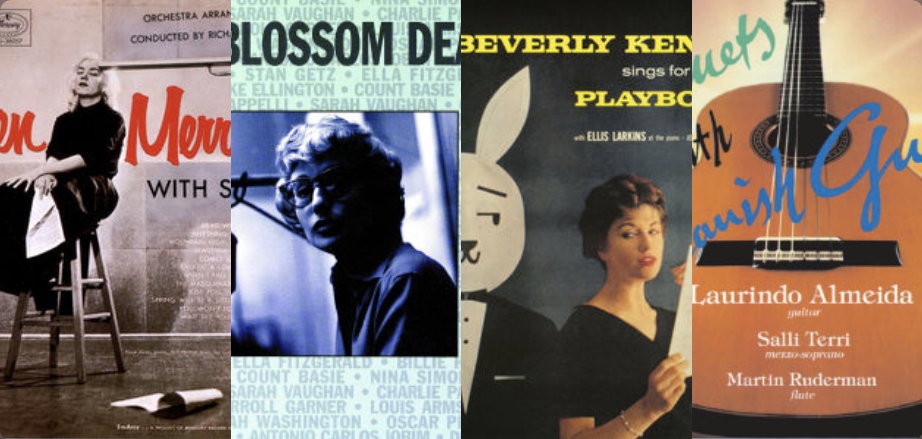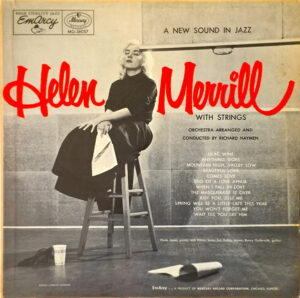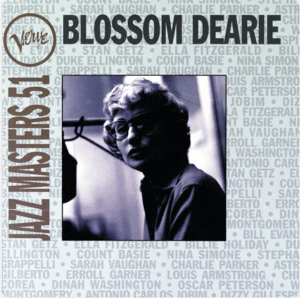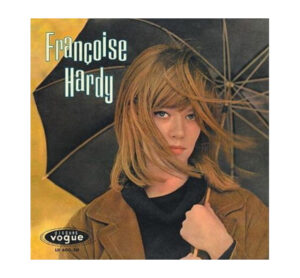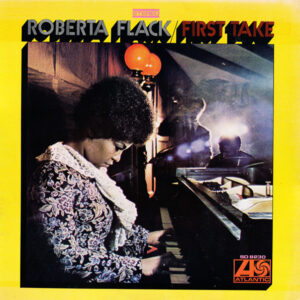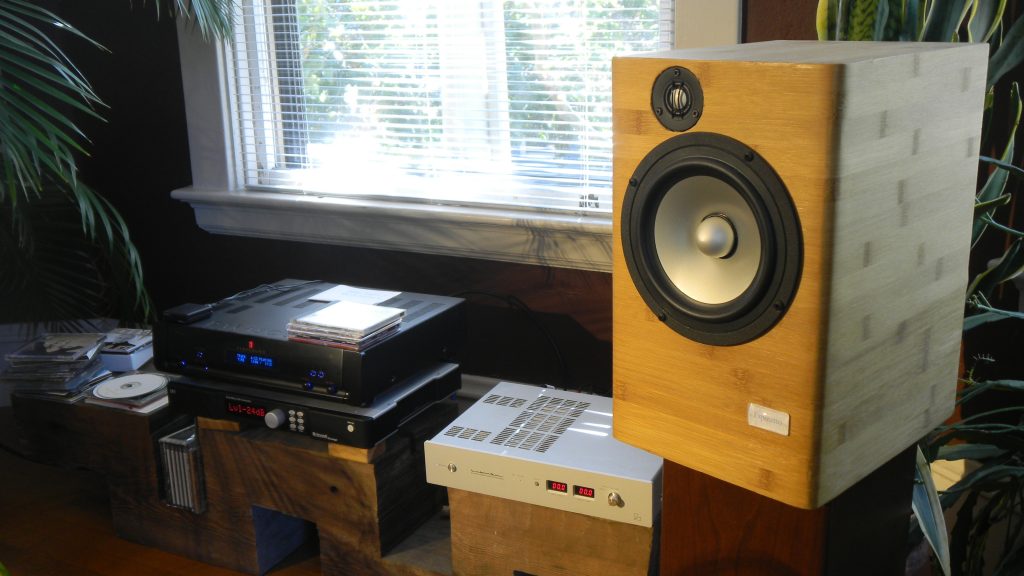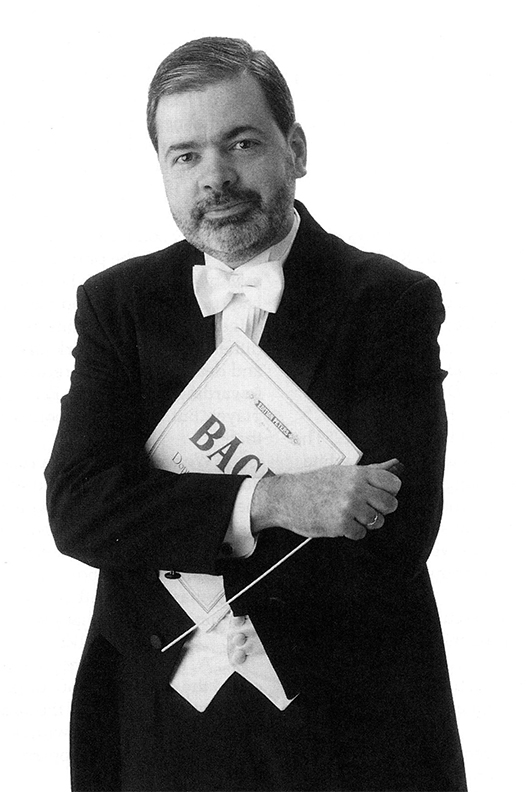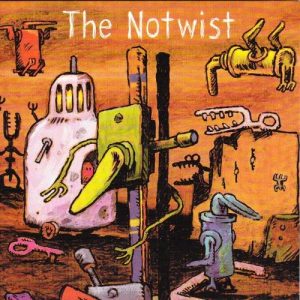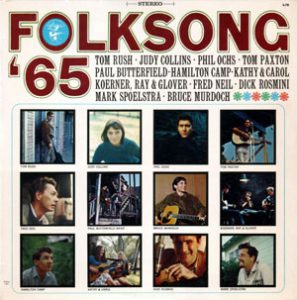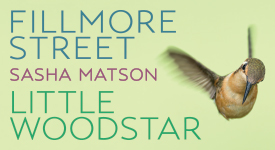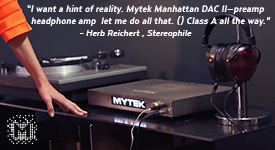Your hearing works in the dark. It even works when you are asleep!
Humans were designed (or evolved) so that certain hard-wired aspects of our ear-brain systems serve as important defense and survival mechanisms. When an Ice-Age Cave Mommy heard a twig snap in the forest, she did not consciously have to focus on, think about, or try to figure out which direction that noise had come from.
That's because an amazing biological mechanism (which essentially is an analog computer made up of cells, running on a very fast, very precise, clock) received the neural inputs from Ice-Age Cave Mommy's widely spaced ears; converted the arrival-time-difference information into spatial-localization information; and then immediately (and involuntarily) redirected her eyes in the direction that the potentially-threatening sound had come from.
All of which takes place in a matter of milliseconds. Every millisecond counts, because that snapping-twig sound might have been made by a saber-toothed tiger!
My thesis is that our abilities to perceive, assess, enjoy, and remember music, "ride along free" on the neural wiring for an important survival mechanism. That's why music means so much to us. That's why old people who have lost many of their mental faculties nonetheless can still remember and be moved by music they enjoyed when they were young.
When we suddenly hear a loud sound with the frequency range and timbral qualities that are characteristic of a lost toddler's wails, we all have, first, a hard-wired "startle alert" reaction; and then, a hard-wired "fight-or-flight" reaction.
Opera composers have been shamelessly exploiting these universal human reactions for as long as they have been composing operas (that is, from A.D. 1598, on). Especially in the big Act 1 aria for the leading soprano.
Just as importantly, many composers of popular music have also made use of this gambit. If you want to hear an example of an "operatic" pop song, listen to Linda Ronstadt's 1970 breakthrough "Baroque Rock" hit (meaning, with classical guitar, classical strings, and harpsichord) "Long, Long Time."
Listen to the artful catch in Linda's voice… and to the power of her voice. I myself think that Linda was gunning for Maria Callas' job at the Metropolitan Opera. Indeed, later on, Linda starred in the Gilbert and Sullivan Light Opera Pirates of Penzance, both on Broadway, and in the film version of that production.
Nearly everyone had a mother, or a female caregiver. That's why women's singing voices tap right into everyone's limbic systems. The first album I conceptualized and brought to completion (it is still in print and selling, more than 40 years later) is a violin-and-piano short-piece recital. However, the title of that album is Songs My Mother Taught Me, after a Dvořák art song that is usually sung by a female singer—as though to her own baby.
What is the most requested audio show demonstration material?
"Female vocals."
So, here are a few!
But first: Ella Fitzgerald's Cole Porter Songbook (which I have recommended for decades); Joni Mitchell's Court and Spark; Jennifer Warnes' Famous Blue Raincoat; and Norah Jones' Come Away with Me all are extremely well known.
Therefore, I think that my giving any of those recordings any additional coverage will only take away from some great albums that many people have never heard—or even heard about.
In some circles, I think the same can also be said for Julie London—the best-selling US female popular vocalist of 1956, 1957, and 1958. Or, perhaps it's just that I need a break from writing about Julie. If you don't know her albums, you should check them out—'early ones first' is best, I think.
The following recommendations are in chronological order by release date or recording date. As always, these lists are idiosyncratic, and very subjective. Therefore, complaining that a singer like Taylor Swift (or, Anette Askvik, of "Liberty" semi-fame) is not on my list is guaranteed to be futile.
That said, I think that, listening first to Janis Ian's "At Seventeen" (1975), and then to what might well have been intended as an "answer song," Ms. Swift's "Fifteen" (2008), one can only conclude that the 1970s were a Golden Age of popular songwriting, while the 2000s… weren't.
Also, I want to focus on artists of demonstrated depth whose works have withstood the test of time. Therefore, this is a list of representative albums, and not "one-hit-wonder" singles. Even though I love playing Alannah Myles' one-hit-wonder Elvis-tribute song "Black Velvet" really, really, loud.
That song went to #1 on two Billboard charts; it won the Female Rock Vocal Grammy. Two trivia bits: The song is in D# minor, which, I think, for a rock song, is almost as remarkable as Dire Straits' "Brothers In Arms," which is in G# minor.
And, while I always had assumed that Alannah Myles' song title "Black Velvet" was a reference to the over-the-couch-sized Elvis Presley paintings on black velvet (paintings of Elvis, not by Elvis; and, in that, I was correct; but just not totally correct); it turns out that the mature Elvis's hair dye of choice was called… Black Velvet.
But there's no way to fit the "Black Velvet" Canadian whisky brand in there: Elvis had a massive prescription-drug problem, but he never drank alcohol.
(Wow, Alannah Myles is 66 now. That makes me feel old.)
The mid to late 1950s were the last time when the most popular musical genre in America was an art music. That's because jazz is an art music.
Yes, there were dopey pop songs that were simply not jazz (e.g., "How Much is that Doggie in the Window?"); lots of "Middle of the Road" instrumental music that did not qualify as jazz; and lots of vocal music, especially small-group vocal music, which also did not qualify as jazz.
Moreover, one should admit that, among the general populace in the 1950s, appreciation for jazz most likely was far wider than it was deep. The same can be said for classical music. Miles Davis' Kind of Blue, Glenn Gould's Goldberg Variations, and perhaps Duets with the Spanish Guitar checked off the necessary cultural-striving boxes, and that was that.
But jazz, back then, had a prevalence, in part born of its contemporaneousness, that it lost not long thereafter. There were not only live performances by artists of the caliber of Miles Davis on prime-time television in the 1950s.
Jazz music was also a production element of many television shows, especially the detective drama Peter Gunn. In that series, private eye Peter Gunn's girlfriend was a singer in a jazz club. From the theme music, through the unfolding of each episode, all the music was jazz.
Two priceless trivia bits: Multi-instrumentalist Victor Feldman played vibes on the 1958 LP The Music from Peter Gunn; in 1977, Feldman played on Steely Dan's album Aja. Even better: Future superstar film-score composer John Williams played most of the improvised piano solos on the Peter Gunn TV-episode soundtracks.
So, we start with jazz, and then we cast the net more widely.
Helen Merrill, Helen Merrill with Strings (1955)
The name "Helen Merrill" might as well have been picked out of a telephone directory book. First-generation Croatian-American Helen Merrill's birth name had been Jelena Ana Milcetic. Merrill's self-titled début album is the one that usually shows up on lists, largely because Clifford Brown's trumpet solos alternated with her singing. But I think that this (perhaps, obligatory for the 1950s) "with strings" offering is the real sleeper/star of Merrill's early catalog.
I can only speculate that her Eastern European heritage (or perhaps her birth sign, or her temperament) is what makes Merrill approach her chosen songs as seriously as though they were classical art songs—and also why she gravitates to the pensive and moody end of the emotional spectrum. Jumpin' jive is not Helen's thing. There are up-tempo numbers, such as "Everything Goes." But they are taken at a measured pace. Sure to be a new discovery, for almost everybody.
DISCOGS
https://www.discogs.com/release/4009094-Helen-Merrill-Helen-Merrill-With-Strings
Confirmed sales of the original LP:
High: $200.00
Median: $36.50
Low: $9.99
Blossom Dearie, Verve Jazz Masters 51 (1956-1960)
I recommend this compilation, despite its inclusion of the dopiest song in human history: "Rhode Island Is Famous for You." ("Pencils, come from Pennsylvania… Minnows, come from Minnesota… .")
Blossom Dearie was a remarkably talented young woman with a very distinctive voice, and a given name that sounds like a made-up stage name. (But it wasn't.) Dearie had been a member of the music-nerd study group that gave birth to The Birth of the Cool; but, for some reason, she was not invited to join the band. Curious. "Crow Jim"? Or, was Chivalry already dead? My cynical guess is that Miles wanted all the jazz fans to be staring at him, and not at the cute white chick who played the piano surprisingly well.
In addition to singing, Dearie plays piano on all but one track of this compilation. Bill Evans once remarked that his use of the musical interval of the fourth in his chord voicings had been inspired by listening to Blossom Dearie. Wow.
While she can be light-hearted or fey, I think her finest work is wistful ballads ("They Say It's Spring"), or songs that allow for a gently ironical delivery ("Down With Love").
DISCOGS
https://www.discogs.com/release/1510582-Blossom-Dearie-Verve-Jazz-Masters-51
Given that this title is a CD compilation from 1996, these reported confirmed sales are of the CDs.
High: $7.85
Median: $4.99
Low: $4.00
Beverly Kenney, Sings for Playboys (1957)
Beverly Kenny (1932-1960) released six well-regarded LPs in the 1950s. She toured with the Dorsey Brothers Orchestra. She sang in New York clubs with George Shearing. She was featured in a Carnegie-Hall (for lack of a better word) variety concert that also featured Miles Davis, Marian McPartland, Art Blakey, and Tito Puente. She had a standing gig at Birdland, with Lester Young.
Amazing Trivia Bit: Beverly Kenney's first paying singing job was delivering singing birthday-greetings Telegrams for Western Union. Really!
Back in the day, Supremo Jazz Critic Nat Hentoff assessed Miss Kenney thusly:
[M]ore flexible than Helen Merrill, swings more easily than Teddi King, and her musicianship and care for lyrics are far superior to Chris Connor's.
(Ouchsies!) Therefore, one must wonder why most of us have never heard of her. I can only speculate.
As you might have already surmised, Beverly died tragically young, at age 28. Eternal Rest, please Grant Her, O Lord. She died by her own hand, perhaps over romantic disappointment or disappointments.
My speculation is not that the manner of her death caused people to tune her out. Rather, post 1960, her career was in the history books, but she no longer could be out on the hustings, making TV appearances and giving radio interviews; and, in the fullness of time, celebrating anniversaries of her career milestones. Eventually, she might have even been featured on one of Playboy magazine's 21st-century "Jazz Cruises."
I also think a trail of breadcrumbs might start at Playboy magazine, and end at Beverly's obscurity today. Please bear with me.
For decades, I have stood on street corners and yelled at passers-by (well, not really), that the place of "Component Audio" in the 1950s-1960s shared American vision of, "The Good Life, Well Lived" was inextricably intertwined with the then-prevailing social mores with respect to, "Dating, Mating, and Family Formation."
You can read the whole rant at "It Takes More than Martinis, Mister!"
https://www.stereophile.com/asweseeit/808awsi/index.html
To concoct an example: In the late 1950s through late 1960s, if a young co-ed went up to a young man's dorm room, and all that was there, was a bed… she had better give more thought to her Reputation. However, if he had a HiFi setup of some sort, they could plausibly claim they were just listening to the new Dave Brubeck LP.
My contention is that many of the HiFi and stereo systems bought back then were not bought because the buyers were crazy about music. They just did not want the girl to ask "Where is your HiFi?," once they got her upstairs.
My vague intuition is that Beverly Kenny unwittingly associated herself perhaps a bit too much with "Dating, Mating, and Family Formation; or, just plain Making Out."
Perhaps with the advent of first-wave Feminism, that aura was just too yicky. In any event and regardless, I think it's a no-brainer that not everybody was comfortable with (so to speak) inviting Hugh Hefner into their homes. Game, set, and match.
Obviously, Beverly's producers at Decca worked out some kind of trademark(s) licensing deal with Hugh Hefner. Beverly also appeared on one episode of Playboy's TV show. She even convinced Hefner to sing along with her, on "Makin' Whoopee." The mind boggles.
Perennial Hipster Wannabe Steve Allen wrote the liner notes for Beverly Kenney Sings for Playboys. Allen therein commented:
A word to playboys: I would not recommend this album as Music to Make the Romantic Approach By. You're apt to get more interested in Beverly than the girl you're trying to impress.
As I said, I can only speculate. BTW, music lovers in Japan are very much into Miss Kenney's recordings. All manner of Beverly Kenney recordings can be found on eBay, up to a supposedly excellent original LP asking $250, and a Japanese SHM CD with Obi, asking $25.
Note, while of course I chose this particular album (and not another) because it supports my long-held sociological contentions, I can also defend my choice by noting that its minimal orchestration (piano or celeste, and bass) gently supports and never gets in front of a very lovely voice.
DISCOGS
https://www.discogs.com/release/4009132-Beverly-Kenney-Sings-For-Playboys
Confirmed sales of the original LP:
High: $640.45
Median: $117.03
Low: $19.95
Salli Terri, Duets with the Spanish Guitar (1958)
I'm not going to argue with anyone who asserts that the LP Duets with the Spanish Guitar was make-out music for 1950s sophisticates (or sophisticate wannabes). However, it was far more than just that. It was also make-out music for 1970s sophisticates, and sophisticate wannabes! (Tee hee.)
Salli Terri was an exceptional singer, by any standard.
This was, as far as I know, the first classical/jazz/jazz-vocal crossover record. Duets with the Spanish Guitar served to bring Latin-American folk and classical music, such as Villa-Lobos' "Bachianas Brasilieras No. 5," to a much wider audience, as well as dressing up music by Chopin, Fauré, and Ibert in Mid-Century-Modern, flute-and-guitar style.
Villa-Lobos, by the way, said that Salli Terri's was the best performance of his "Bachianas Brasilieras No. 5." Not incidentally, an LP copy of Duets with the Spanish Guitar was one of the young Linda Ronstadt's most-cherished recordings.
Audiophiles take note: Duets with the Spanish Guitar won the Grammy award for Best-Engineered Record (Classical) at the first-ever Grammy awards (1959). (Note, the exact wording of that award's title has changed several times over the years.)
DISCOGS
Confirmed sales of the original Mono LP (there was also a Stereo reissue, in 1965):
High: $17.99
Median: $6.33
Low: $2.00
Jo Stafford, Jo + Jazz (1960)
Jo Stafford (1917-2008) was a once-famous singer whose career began in the 1930s. Her unstinting service entertaining US military personnel during WWII earned her the nickname "G.I. Jo."
Jo + Jazz was recorded just 16 months after Miles Davis's Kind of Blue; in the same studio, with the same producer—Irving Townsend—and (I must assume) with the same equipment and engineers.
However, whereas Kind of Blue was the high-water mark of brilliance and innovation in improvisation, Jo + Jazz was the swan song for orchestrated-jazz female vocals.
The list of assisting musicians is stellar: Ben Webster, Johnny Hodges, Ray Nance, Jimmy Rowles, Mel Lewis, Conte Candoli, Russ Freeman, and Don Fagerquist. The orchestrations were by Johnny Mandel, from the time before he struck pay dirt with "The Shadow of Your Smile."
Stafford and her husband, jazz pianist and arranger Paul Weston, reportedly thought that Columbia failed to promote the record adequately. That might have been the case.
However, in the label's defense, by 1960, tasteful jazz singing was going begging. 1960 was the year of "Yellow Polka-Dot Bikini." The top 1960 chart positions went to Elvis Presley, Chubby Checker, and the Drifters; there also was a strong showing for Ferrante & Teicher's "Theme from (the movie) Exodus."
The one little, entirely painful fact that most starkly illuminates the down-and-out, nearly-hopeless estate of popular music in America in the late 1950s and into the 1960s, is that the 1960 Grammy for "Album of the Year" went to Bob Newhart's spoken-word, stand-up comedy album The Button-Down Mind of Bob Newhart.
Bob Newhart also took home the "Little Gold Gramophone" for Best New Artist. No foolin'.
The down-ballot races provided little comfort. Record ("single") of the Year went to Percy Faith for his instrumental/orchestral cover of "Theme from A Summer Place." Song of the Year went to Ernest Gold for composing the song "This Land," which, in an instrumental-only version, was the main-title music for the film Exodus.
As far as I know, Gold's Grammy remains the only example of an instrumental cover of a song's being awarded Song of the Year. Which not at all changes the fact that the worthies of the National Academy of Recording Arts and Sciences (NARAS; not to be confused with NASCAR) could not find a vocal performance of a new song (or an old song) fit to win any of their top three prizes.
Seen from that perspective, it makes me wonder whether the arrival of the Beatles on our shores might not be an example of Divine Providence.
My two favorite Jo + Jazz cuts are "The Folks Who Live on the Hill" (Stafford's is my go-to vocal version) and "Imagination." But the entire album is a treat: a precious moment in time, forever frozen in amber. Again, this is almost certain to be a new discovery, for almost everybody.
DISCOGS
https://www.discogs.com/release/6579096-Jo-Stafford-Jo-Jazz
Confirmed sales of the original Stereo LP:
High: $50.00
Median: $15.00
Low: $3.00
Françoise Hardy, Françoise Hardy (Tous les garçons et les filles) (1962)
Now, here's a seismic change from Jo + Jazz. Or, if you prefer, a sea change.
Françoise Hardy (her last name is pronounced "Ardy") was raised in Paris, by a single mother. Her father briefly reappeared in her teenage years, giving her a guitar as a high-school graduation present. Françoise taught herself to play the guitar. She soaked up the music she heard on the radio in the late 1950s and early 1960s. (She tuned in to Radio Luxembourg, which played American music, and which broadcast in English.)
Françoise answered an ad looking for young singers. The first single released from her first LP (originally untitled; then self-titled; then re-titled with the hit-single title) sold a million copies, mostly for its "B" side, "Tous les garçons et les filles" ("All the Boys and the Girls").
A modeling career and a role in the 1966 auto-racing film Grand Prix followed. Bob Dylan thought that Françoise was the ideal woman—Dylan even gushed about her on the back of one of his LP covers. Miles Davis was entranced. And, Mick Jagger, it seems, tried to set Françoise up in a threesome… my guess, with Marianne Faithfull. (Sorry, Mick; she's a nice Catholic girl!)
It gets better! Jimmy Page once claimed in a radio interview that he had played on Mlle. Hardy's first recording!
Zut alors! Future Led Zeppelin frontman playing rockabilly behind a teenaged Eurobabe? Incroyable!
Quel dommage, I must conclude that that's a story that is "too good to fact-check." Mlle. Hardy later said that her first record was made with "the four worst musicians in Paris," and I can't imagine the word "worst" ever applying to Mr. Page's playing.
What most likely happened was that after the success of her first LP, Mlle. Hardy crossed the Channel to record an LP in England that could be sold in the British market without worrying about having to pay import duties. Therefore I conclude that Jimmy Page recalled having played on Françoise's first UK album.
The chronology fits… and it is a matter of record that Page did play, in London, on two Johnny Hallyday albums in the same general time frame. If the name "Johnny Hallyday" is unfamiliar to you, he was a Franco-Belgian pop and rock singer (the "Gallic Elvis") whose 79 career albums racked up total sales of more than 80 million copies.
The thing that I find most arresting about Mlle. Hardy's first LP (which was issued about four months before the Beatles released their first LP) is that a self-taught teenager created a fusion between the French chanson tradition and the Rockabilly strain of American popular music.
Which, obviously, puts Françoise's first album light-years distant from Jo Stafford's "Great American Songbook" jazz stylings. That said, taking Françoise's career as a whole, her most popular songs in English-speaking countries were her poignant but dignified ballads, such as "All Over the World."
DISCOGS
https://www.discogs.com/release/1651457-Fran%C3%A7oise-Hardy-The-Yeh-Yeh-Girl-From-Paris
Confirmed sales of the 1966 US Mono LP release:
High: $48.00
Median: $24.48
Low: $3.00
Roberta Flack: First Take (1969)
I recall Roberta Flack's once telling late-night television talk-show host Johnny Carson that her young ambition had been to be a concert pianist. She certainly started out on the right track. She played piano in the AME church her family belonged to (and she also visited a local Baptist church, to hear contemporary Gospel music). Flack was accepted as a piano student on a full scholarship at Howard University—she entered at age 15.
But then, as she later drily told Johnny Carson, she looked around, and she saw that there were no African-American woman concert pianists; and especially, there were no African-American overweight-woman concert pianists.
That being the case, Roberta Flack taught high-school Music, and English; and she began seeking gig work as a pianist. She started out at a restaurant, accompanying similarly-under-employed opera singers. Then she began playing, and herself singing, standards, folk music, and pop songs during the "opera-bits" intermissions.
Not long after, she was hired as a regular act in her own right by a nightspot on Capitol Hill, and her reputation quickly spread. Woody Allen, Bill Cosby, and Ramsey Lewis were among her fans. Les McCann arranged an audition for her, at Atlantic Records.
Roberta Flack's first album was reportedly recorded in only 10 hours. Perhaps that is why it is called First Take. Well, she had been practicing those songs for three years… .
Roberta Flack was the first singer to win the Grammy Award for Record of the Year (meaning for a single, not an album) in two consecutive years. In 1973, for "The First Time Ever I Saw Your Face," and in 1974, for "Killing Me Softly with His Song." In 2001-2002, the group U2 did the same; followed by Billie Eilish, in 2020-2021.
Note, if anyone is confused as to how Roberta Flack could win a 1973 Grammy (which recognized recordings released in 1972) for a song that was on her 1969 début album, I perfectly understand.
What happened was that jazz buff Clint Eastwood asked for Synchronization Rights to use Flack's 1969 "The First Time Ever I Saw Your Face" track in his directorial-début film Play Misty for Me (released October, 1971).
Shazam, so to speak. Eastwood's movie was a modest hit. Not a monster hit; but certainly, a hit. Therefore, Atlantic rush-released a single of "The First Time Ever I Saw Your Face" which sold more than a million copies. That's a monster hit.
The single's "coattails" also made the album First Take a monster hit too, three years after its largely-unheralded original release. Monster album hit, as in US No. 1, and eventually 1.9 million copies sold.
So, Flack's 1973 Grammy was for the newly-released 1972 single, and not for the original 1969 album. (If the above seems to you to constitute a questionable "loophole," you are free to let NARAS know your thoughts.)
Perhaps Clint Eastwood got one of the best such licensing deals in history (a one-time payment of $2000; which is about $16,000 in today's dollars). But I am also sure that, in due course, Miss Flack cried all the way to the bank. <irony> So did songwriter Ewan MacColl, no doubt!
By the way, in their original phone call to discuss the licensing deal, after they had put the money issue behind them, Clint Eastwood asked Roberta Flack, "Is there anything else?"
She responded, "I'd like to re-record it. That version is too slow." And, indeed, it was almost twice as slow and long as Ewan MacColl's 1957 love gift to Peggy Seeger.
Clint Eastwood tersely replied, "No, it is not."
You can always depend upon Clint.
The same year Roberta Flack won Record of the Year for "The First Time Ever I Saw Your Face," she also won Best Pop Vocal Performance by a Duo, Group, or Chorus, for a different song, "Where Is the Love," with Donny Hathaway. I don't think anyone else has done that, either. Moreover, in 1974, in addition to 1974's Record of the Year, she won the Grammy Award for Best Pop Vocal Performance, Female.
DISCOGS
https://www.discogs.com/release/758676-Roberta-Flack-First-Take
Confirmed sales of the original Stereo LP:
High: $80.00
Median: $8.44
Low: $0.99
Well, with all that important explanatory material that is back up front, I have already gone way way over my word target. Therefore, I will cover albums eight through fifteen, next time around!
Here's a Qobuz link these albums:
https://play.qobuz.com/playlist/32125760
The first section of this installment is based upon the guest lectures on "Music Perception" that John Marks gave at Brown University, in the Cognitive, Linguistic, and Psychological Sciences Department course on Perception.




